Native American Art – The History of Native American Artworks
Before the colonization of the Americas, Native American groups occupied North and South America. These Native American groups were the original indigenous people of America, who are also known as American Indians. In this article, we will look at Native American art, also referred to as American Indian art, including some of the most famous Native American paintings, drawings, and sculptures of the different regional cultures that provide a rich source of information on the way that art was viewed and incorporated into indigenous American cultures. Read on for more about the amazing world of Native Indian artwork!
An Introduction to Native American Art
It is no secret that the indigenous people of America have been subject to the intense effects of colonization, which have impacted many indigenous groups since the beginning of European-occupied America. The realm of native art or Native American art has also been subject to colonization involving the collection of artworks from over 50 indigenous communities in the 19th century across regions like Salem, which was a major colonial hub. By the turn of the 20th century, the United States Government had robbed the indigenous people of their language, religion, land, community, and artifacts. The history of indigenous people and the way that they have been treated by Western-European colonizers, as “a vanishing race” is one of the most critical dialogues one can engage with in the Contemporary era.
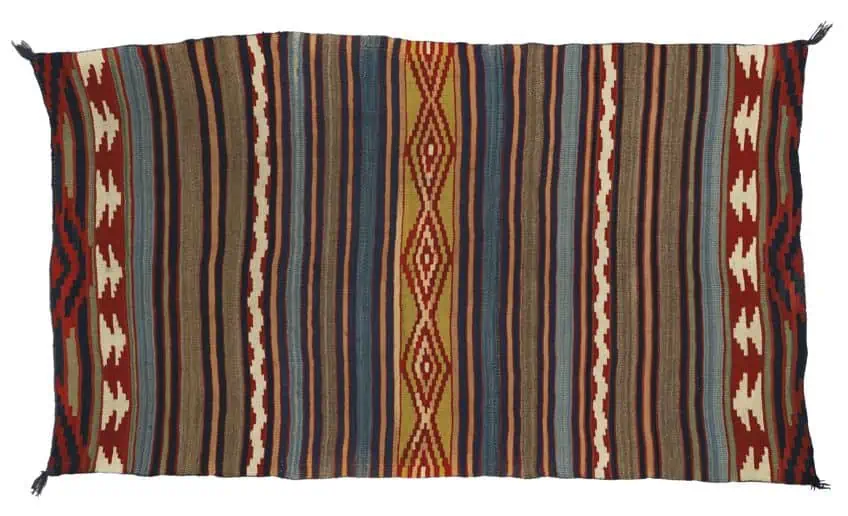
It is important to acknowledge that the history of Native American art was impacted by the brutal colonization experienced across the Americas, which led to a generalization of indigenous art forms and the development of multiple stereotypes. It is equally as important to take note of the fact that Native American art is a very broad term that spans multiple cultures and thus each artwork is unique to the culture in which it was produced. American Indian artists relied heavily on the traditions in which they grew up and the specific cultural practices, which defined their surroundings and lifestyles. Before we dive into the Native American art scene and the many wonderful artifacts and artworks of indigenous American society before the colonization of America, we will take a look at a brief history of the indigenous groups who occupied the United States through their regional variations and the impact of European culture on these regions and societies.
A Brief History of the Indigenous People of America
Christopher Columbus was a figure who was always credited with discovering America. It is important to realize that before Columbus landed in the Bahamas, other groups of indigenous people were present and were the nomadic ancestors of the modern Native American cultures we know today. These early groups of people trekked across a land bridge from Asia to Alaska approximately 12,000 years ago and founded the Americas long before foreign settlers decided to pillage and destroy the original civilizations. European settlers only arrived around the 15th century and by this period, more than 15 million indigenous groups were occupying the Americas.
The area later established as the United States hosted around 10 million indigenous groups and over time and with migration patterns, many cultures spread out. Native American cultures relied on the migration of wild animals and the availability of natural resources for survival. Other groups decided to move South and East while evolving and adapting to the environment as time went on.
To historicize the indigenous groups of the Americas, anthropologists and geographers divided the North Americas into different cultural areas to identify the different groups as well as any shared similar cultural practices. These cultural regions are defined by 10 areas: The sub-Arctic, the Arctic, the Northeast and Southeast Plains, the Southwest, the Great Basin, the California area, the Northwest Coast, and the Plateau area. According to recent statistics, the US Census Bureau stated that only 4.5 million indigenous Native Americans are remaining in the United States today, which paints a picture of the historical tragedies of the past and the long-term effect that European colonization had on Native American culture.
Regional Variations and the Impact of Colonization on Native Art
Below, we will highlight the different regional variations of indigenous cultures, which will help you gain a better idea of the connection between the cultures and their shared experiences that influenced their artworks.
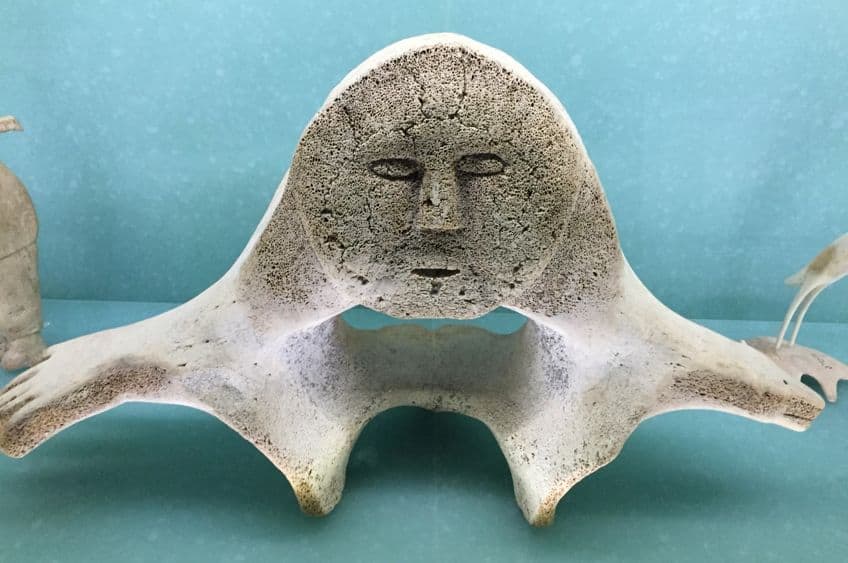
The Arctic Area
The Arctic cultural area is located in present-day Canada, Alaska, and Greenland, and was once home to the Inuit and Aleut cultures. These cultures currently speak derivative dialects of their original indigenous languages, which descended from the Eskimo Aleut language tree. Many Inuit cultures from the Arctic area were recognized as nomadic cultures and relied on the animal migrations of the Arctic, including polar bears, seals, and other animals across the tundra to survive the harsh climate. In the southern part of the Arctic, the Aleut group was more grounded as a community and established small fishing villages around the shoreline.
The Aleut and Inuit cultures shared many common cultural characteristics.
Both cultures occupied Dome shaped homes crafted out of timber or sod and made use of different animals’ skins to create warm and weatherproof clothing. These cultures also produced technologies such as dog sleds and fishing boats. By the mid-19th century, the United States procured Alaska, which resulted in many decades of oppression for the indigenous people as well as the introduction of European diseases brought on by colonization. The results of such interference resulted in a massive decline in the population to only 2,500, including the descendants of these indigenous groups who still occupy Alaska.
The Sub-Arctic Area and Plains
Other areas in the Northern American hemisphere where colonization affected indigenous groups continued in a similar pattern and by the 17th and 18th centuries, other groups in the sub-Arctic saw a change in their cultural lifestyles. Indigenous groups from the sub-Arctic who once focused on hunting and gathering began to engage with European traders, which led to the displacement and mass murder of many communities. The products of the European world included commercial goods such as utilitarian knives and kettles, as well as detrimental weaponry.
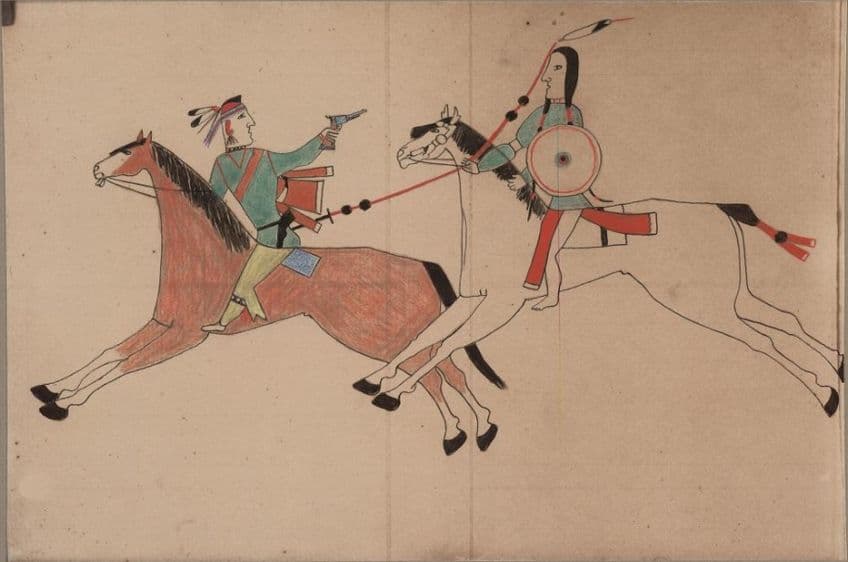
The end of the 19th century saw many European hunters kill off most of the Plains’ buffalo population for sports and fun, which significantly affected the Native American communities of the Plains. As a result of European occupation in the Plains area, many of the indigenous groups were forced to relocate to government reservations. Not only did the continuous movement impact the communities and survival of many indigenous groups, but it also led to the mixture of cultures, which in turn impacted the artistic productions of many native artists.
Southwestern Areas
Nomadic groups were also located in the Southwestern regions, including the Apache and Navajo tribes, who survived on a hunter-gatherer lifestyle and crop trading with their neighbors. After the Mexican war, many of the Southwestern indigenous groups were killed due to Spanish colonists and other Christian missionaries who took hold of Pueblo Indians as slaves. From the mid-1800s onwards, the government relocated many of the indigenous groups onto new reservations and by the 18th century, the Plateau region saw the integration of many animals into the local economy.
This expanded the area for hunting and acted as a place of trade between the Plains area and the Northwest cultures.
Leaders of the Corps of Discovery Expedition in the 19th century, Meriwether Lewis and William Clark passed by the Plateau area, which saw an increase in the number of European settlers, and by the close of the century, the groups who occupied the Plateau area were moved to other reservations. This highlights the very unsettled lifestyle of Native American Indians whose lives were uprooted by the settlers.
Northwest Coastal Areas
Indigenous groups from the Northwest Coast areas, including Northern California and the British Columbia area, had an abundance of natural resources from which people could rely on to survive. Regional rivers provided people with resources such as fish, which made the lives of Northwest Coast groups much easier than other groups who struggled to forage and hunt due to the impact of the European settlers. Class divisions were also prominent in a few indigenous societies and were seen in the Northwest Coast cultures where the village chiefs or members of the upper hierarchy would display their position of power by the number of possessions that they had, including slaves. The idea of human subjects was a way power status symbol for the amount of “disposable human resources” one had.
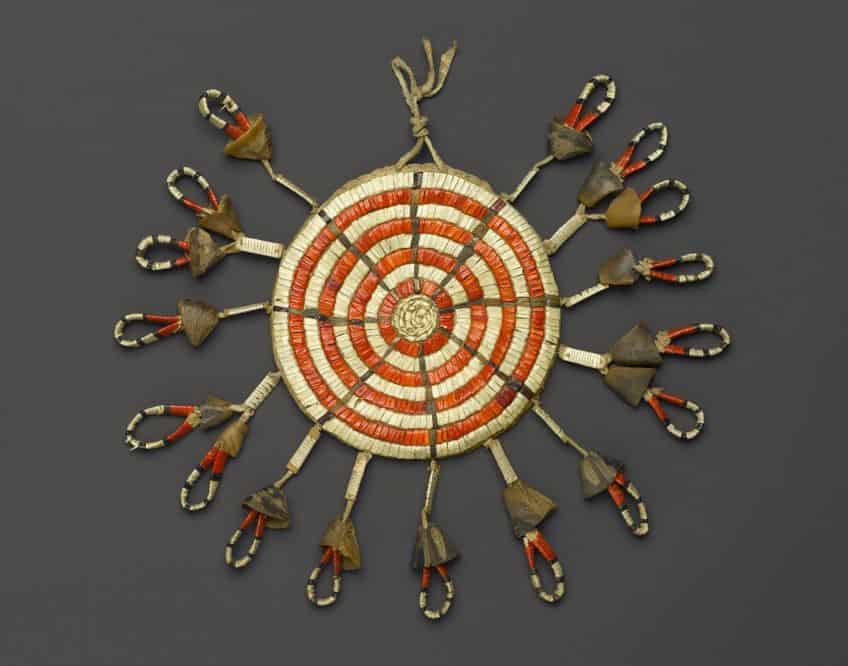
Native California
California was home to around 100 different indigenous groups, which spoke over 200 varied dialects of indigenous languages. This rich North American landscape hosted around 300,000 people in the mid-16th century and many of the indigenous languages were derived from the Maidu, Yokuts, Miwok, Hokan, Uto-Aztecan, and Athapaskan societies among many other cultures. There were other groups called “Mission Indians” who originated from the southwest due to Spanish colonization and spoke similar languages to the indigenous groups in California.
The indigenous groups of California were incredibly diverse, yet they lived similar lives and shared common ground. These indigenous groups were also highly organized and functioned on smaller family-led groups of hunter-gatherers called Triblets. The different communities in California forged relationships with each other, which were built on various systems of trade and shared rights which established an overall society of peace. After Spanish explorers settled in California, the 18th century introduced one of the darkest periods in California led by Junipero Serra. Serra established a mission in San Diego, which was the beginning of forced labor followed by diseases that spread across California and exterminated many of the indigenous groups.
To summarize, the history of indigenous cultures and their survival in the history of the United States and broader Americas were not pleasant. Native American culture and occupation were greatly affected by the influence of European colonization. Now that you have gotten a brief overview of the extent to which Native American Indians once occupied America, we can now examine the role of art in Native American Indian art, as well as some of the most interesting artworks to date.
The Role of Art in Native America
For many European and Western outsiders looking in on the culture and art practices of Native American indigenous groups, it is often assumed that these cultures only produced artifacts or “objects of the past” that are more appreciated through an anthropological lens. The role of art in many of the indigenous societies occupied both a utilitarian and artistic function. Cultures from the Plains as well as the Inca and Aztec civilizations showcase an artistic inclination towards the representation of warrior culture while other indigenous groups showcase the impact of political and military influences.
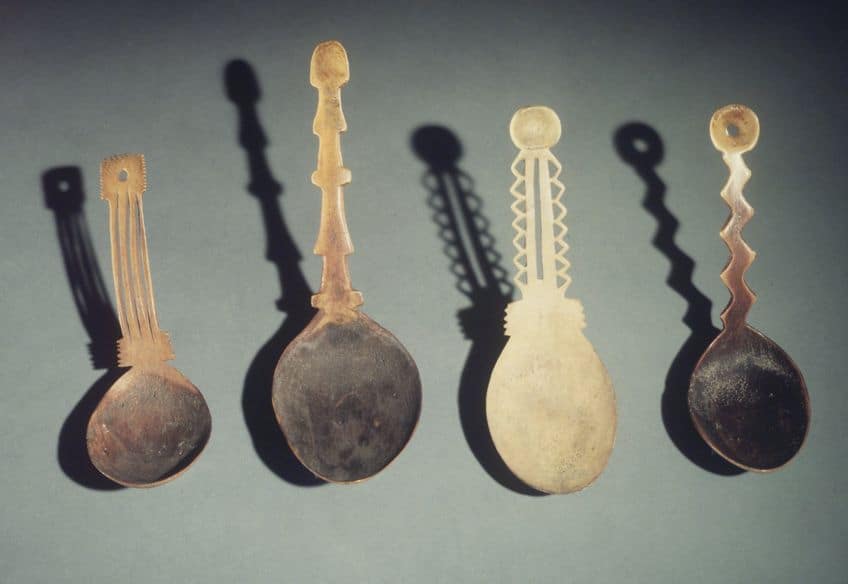
Artworks from most indigenous American groups included objects and sculptures linked to religious practices such as deity worship, veneration or placation of the Gods, death, protection, and other spiritual practices built around significant life events. Native American societies possessed a deep awareness of the natural environment, including the role of the individual concerning the community, the supernatural world, and how the supernatural world impacts the earthly plane.
The Duality of American Indian Artwork
It is necessary to point out that the role of art objects and many elements that seem utilitarian to the modern eye also served a dual purpose in indigenous societies. For example, the use of plainware bowls was used for food preparation activities while other polychrome-painted vessels would serve the same function, yet also be used in different contexts to fulfill ceremonial practices.
American Indian art also demonstrates a semi-magical quality that can be admired by an emphasis on Naturalism and Realism. Native American Indian artists did not attempt perfection in artistic representation, rather, they attempted to capture the essence of the subject in question.
Due to their acknowledgment of a greater creator or the higher powers of the spiritual world, the essence of a subject was more important than the realistic representation due to respect for natural form and spirit. This can be seen in partial designs that allude to images or subjects yet may not appear to be “accurate” or portraits of people and effigies that possess a degree of realism yet express an artist’s unique artistic viewpoint.
The Importance of Ritual in American Indian Art
It is just as important to acknowledge the role of ritual practices in non-Western-European cultures. Native Americans often employed artistic objects in ritual processes, which informed the process of creation. The process of creating artwork for a ritual or ceremonial purpose was centered on its embodiment of the life of the material and its use. This can be seen in the creation of masks such as the Iroquois False Face mask, which is referenced as a “live mask”. The process of creation is acknowledged and described from the moment the sculptor carves the mask to the moment the tree and the mask are “fed tobacco” before they are separated from each other. The function of the ritual was held to an equal level of importance to that of the sculptor and process. As such, if ceremonial rituals were ignored and unacknowledged, it was believed that the article produced in ceremonial acts would prove counteractive and were even considered dangerous due to their diminished efficacy.
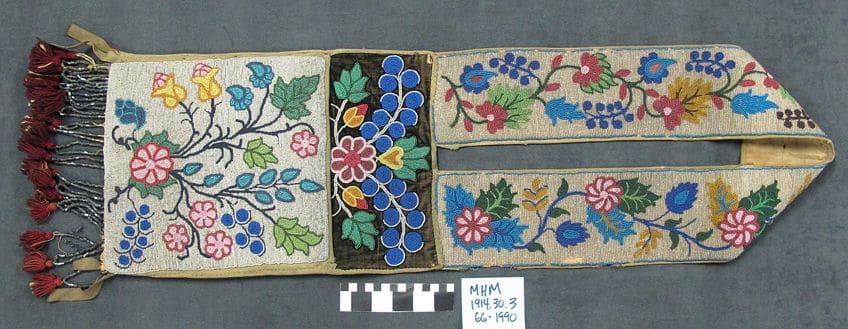
The Vision Quest in Native American Art
The vision quest is an experience whereby an individual experiences their soul leaving their body and is a unique experience for artists of the American Indian world. Many interesting designs and patterns emerged from vision quest experiences where one would encounter strange creatures and experiences. This out-of-body experience would show one spirit or protective guides, who would be re-created during the artist’s waking hours.
These vision quests were recorded by the individuals themselves, which resulted in the visual qualities of each vision quest-inspired artwork differing.
Natural Materials in Native American Art
Artists from different indigenous groups across Native America relied on different natural materials that were found in their environment. It can therefore be said that the art of different indigenous groups from Native America reflected the environment in which they occupied through their artworks’ material composition. Artists surrounded by forest areas would go on to become incredible wood sculptors, whereas artists who were exposed or had more access to clay would maximize their medium and go on to become skillful potters.
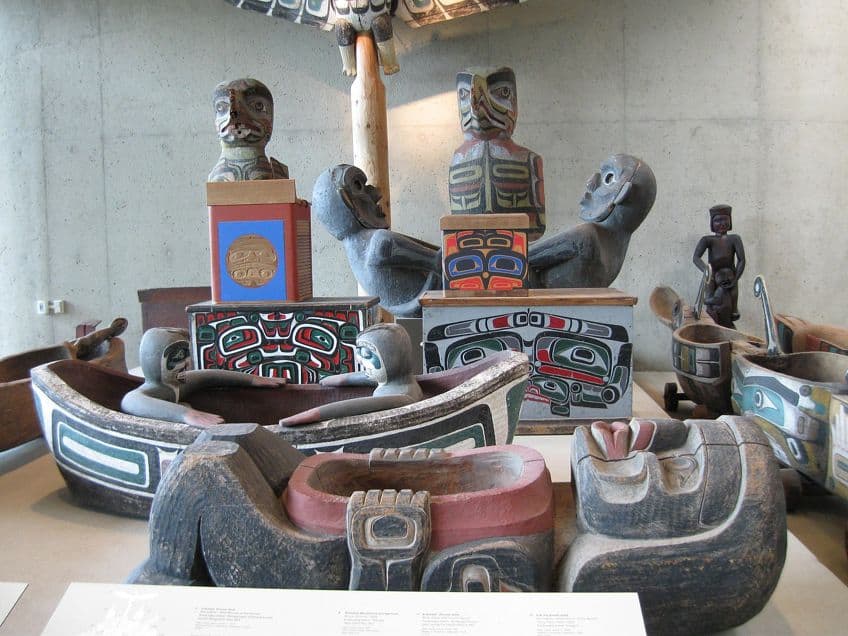
It is also important to note that there is almost no natural material left unturned by American Indian artists. These included materials such as jade shells, clay, wood, metal, porcupine quills, stones, deer hair, and many other natural materials. Art objects that were created for ritual purposes were considered high commodities since their value lay not only in their ritual function but also in the associated material, which made these objects particularly precious and irreplaceable. As such, certain materials achieved a higher standard of value in the Native American economy.
Shared Motifs and Design Styles in Native American Art
It is important to remember that the art styles across the different American Indian cultures differed according to each culture’s artistic expression. Although natural motifs and geometric patterns are recurring styles across painting and design, there are a few other interesting elements from Native American art that appear “universal”. This includes images such as the plumed serpent design, which was found in many art forms but spanned almost all Native American cultures.
The intermingling of the different cultures also resulted in the development of shared design styles since groups borrowed different approaches from the cultures they were connected to. An intercultural marriage also aided in the sharing of values and cultural expressions, which paved the way for the expansion of artistic traditions. Artifacts and art objects from museums with Native American collections feature ornaments and materials such as feathers, turquoise, jade, and shells that were materials of trade, originating from sites that were miles away from the culture in which they were discovered.
The influence of trade, politics, and intercultural relations was clear in Middle America and even South America with the image of a feline deity who appears around the Andean region. Other specific customs such as trophy heads, new fire ceremonies, and masked personations were practices that also encouraged much artistic expression in the Native American visual arts.
Native American Sculpture
One cannot mention Native American sculpture without discussing the importance of figurine sculptures. Figurine sculptures were among the most popular types of sculptures created by many American Indian societies. The figurine sculptures were sculpted specifically to each culture’s style and depended on the available materials of the community. Another important feature of Native American sculpture includes the use of animal imagery. Some of the most popular animals represented in Native American sculpture include bears, fish, eagles, and horses, all of which were ascribed to spiritual meanings. Other common sculptural features that appeared across indigenous cultures included human faces, masks, and dolls, which were attached to symbolic meanings and superstitious belief systems. Below, we will look at a few interesting Native American artworks from various indigenous groups that give us insight into the diverse aspects of indigenous cultures.

Mask (1825 – 1827)
| Artist Name | Unknown artist from the Kaigani Haida culture |
| Date | 1825 – 1827 |
| Medium | Wood and pigment |
| Dimensions (cm) | 26.035 x 19.05 x 10.16 |
| Where It Is Housed | Peabody Essex Museum, Massachusetts, United States |
This colorful Native American mask was created by an unknown artist of the Kaigani Haida culture in the early 19th century and is currently housed in the collection of the Peabody Essex Museum in Salem. The mask features geometric patterns and solid painted sinuous lines, which express the decorative nature of American Indian mask painting. The surface of the mask itself appears smooth and finely sculpted with great attention paid to the facial expression of the mask and details on the nose. The mask emulates a human face and is sculpted with dimension and emphasis on the contours of the face and stark black eyes, which amplify the angered expression on the mask.
The Haida culture is an archipelago territory, which is an old Native American indigenous culture that existed for more than 12,500 years. The archipelago territory is located on the coast of British Columbia in Canada. The Kaigani Haida culture lives on the border of the US and Canadian territories which cuts through the South of the Prince of Wales island and towards Southeast Alaska.
The first recorded point of contact between Europeans and the Haida culture occurred in the late 18th century with the Spanish explorer Juan Perez, who sailed north as part of an expedition to claim new territory.
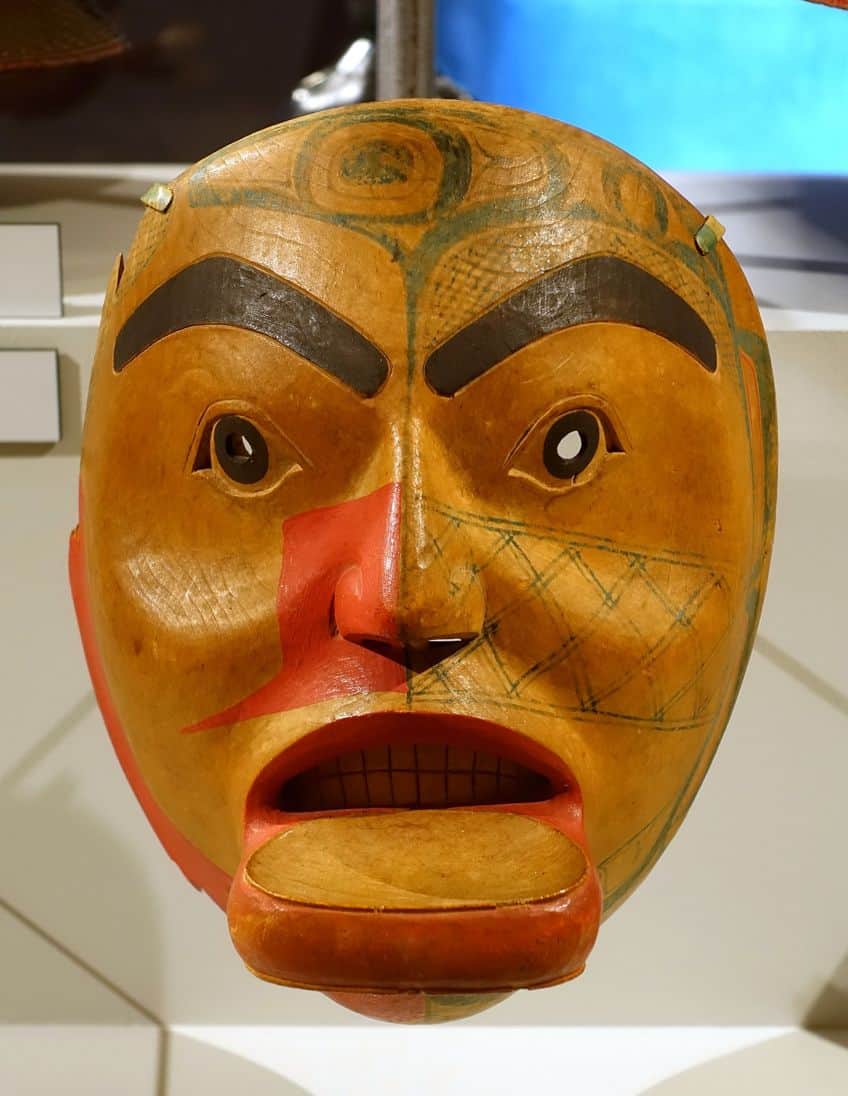
By the mid-19th century, British colonial authorities established the colony of Queen Charlotte Islands, which later became part of British Columbia. The Haida Island was also faced with another effect of colonialism by the late 19th century. A Haida tradition called Potlatch was outlawed under an official ban, which destroyed important fiscal relationships and diminished the cultural heritage of coastal groups. During this period, many totems and other cultural artifacts were destroyed due to the Christianization of the islands and subsequently breaking down the morale of the indigenous people.
The significance of masks in the Haida culture is tied to the use of masks in secret societies. These secret societies held dance performances that integrated masks and puppets to represent the spirits of the forests, which the Haida culture referred to as the gagiid.
In the broader American Indian cultural belief system, wearing a mask was seen as an object that affected the wearer of the mask, since masks were regarded as living artifacts, and to put on a mask was to embody the representation of the mask itself and not simply impersonate the expression. Masks, therefore, served as physical manifestations or tools through which one could physically manifest parts of themselves.
Diné Totem Pole (1961 – 1964)
| Artist Name | Charlie Willeto (1897 – 1964) |
| Date | 1961 – 1964 |
| Medium | Wood and paint |
| Dimensions (cm) | 25 x 23 x 153 |
| Where It Is Housed | National Museum of the American Indian, Washington D.C., United States |
This enigmatic totem pole was created by a Diné Navajo sculptor Charlie Willeto in the mid-20th century and portrays four stacked figures. The totem pole is painted in four distinct colors: brown, white, black, and green paint and represents an owl, a winged mask, a human head, and a frog. Each animal on the totem pole carries significant meaning to the culture of the Diné Navajo group and gives one a glimpse into the way that animals in Native American art have occupied local artworks. The frog in Diné culture is associated with being a “controller of moisture” and as such, is a highly respected creature. The image of the owl is also used as a signal or messenger of protection who conveys a warning. The owl acts as a symbol of protection. In other Native American belief systems, one is advised to not touch an owl’s feather if it is lying on the ground as these are seen as omens or symbols of death.
The totem pole was created by Diné artist Charlie Willeto who began his sculptural practice in the 1960s, which marked a few years before his death. Willeto was a traditional shepherd and a trader for his reservation. Willeto’s oeuvre encompasses more than 400 figure sculptures and carvings that were inspired, not for commercial purposes, but from traditional values and ceremonial practices. His figure carvings and dolls would often be taken to sacred sites and used in rites such as the awééshíín’análnééh curing rite.
Hopi Pueblo Kachina Doll (c. 1962 – 1963)
| Artist Name | Unknown artist from Hopi Pueblo culture |
| Date | 1962 – 1963 |
| Medium | Cottonwood, feathers, yarn, paint, and glue |
| Dimensions (cm) | 12 x 9 x 28 |
| Where It Is Housed | National Museum of the American Indian, Washington D.C., United States |
One such example of popular Native American sculpture is the Hopi and Kachina dolls, which were symbols of good luck that helped individuals to ward off any evils during periods of distress. These dolls were crafted by the Hopi and Zuni groups and were made from natural materials such as wood, leather, beads, roots, feathers, and stones. Larger sculptures such as totem poles are among the most famous Native American sculptures, which captured a culture’s heritage, family members, or even the social status of a specific indigenous group. Groups such as the Adobe culture created clay figurines and would use the medium to create many other smaller sculptures inspired by nature and animals. This included sculptures of frogs, weapons, masks, and other utilitarian objects like drinking vessels. Native American sculpture thus draws from events that occurred in real life and ranged from bloody battles, daily struggles, and an admiration of beauty in the natural elements to an appreciation of color, art, and spiritual practices.
In Native American culture, many of these elements were connected, which makes the appreciation of indigenous art from the past so special. The appreciation of animals was also immortalized in animal sculptures and acted as tributes to animals that indigenous people relied on for food, transport, and warmth.
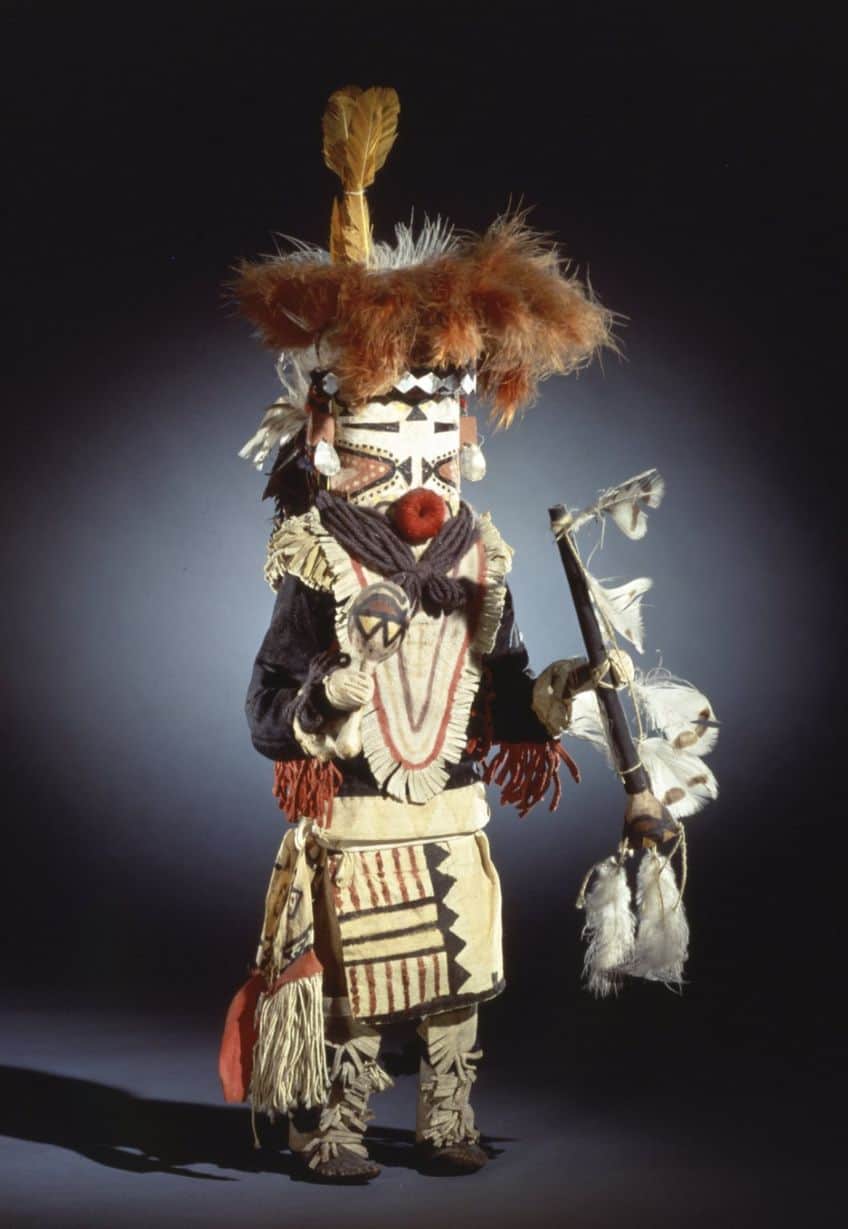
Native American Painting
Unlike Western European cultures which relied upon flat surfaces and canvases to create bold works of art, Native American societies choose to work with different surfaces and the qualities they offered. This meant that their artworks had an increased level of dimension since their paintings and drawings were created on three-dimensional surfaces and not limited to a flat surface. This also meant that many Native American artists did not force their artworks and creations to conform to a particular standard, which makes the uniqueness of Native American art and painting so profound. Native American painting also demonstrates one of the most common features of Native American art – Naturalism.
Below we will take a look at some of the most famous Native American paintings that will have you fascinated and in awe at the amazing artistic qualities of indigenous American Indian cultures.
Dance of the Mountain Gods (1962) by Ignatius Palmer
| Artist Name | Ignatius Palmer (1922 – 1985) |
| Date | 1962 |
| Medium | Watercolor and ink on paperboard |
| Dimensions (cm) | 63.9 x 33.5 |
| Where It Is Housed | National Museum of the American Indian, Washington D.C., United States |
Dance of the Mountain Gods is a famous watercolor and ink Native American painting by Ignatius Palmer. Palmer was an artist who also served in the US Army Air Corps during World War II and thereafter became a construction worker and followed his passion for painting. Palmer created many illustrations for an elementary school in addition to relaying many narratives about Apache culture. Palmer was considered to be one of the few Apache artists that have demonstrated a unique approach to painting through the combination of themes such as daily life on the reservation with cultural stories. Dance of the Mountain Gods reflects the art style of Mescalero Apache culture which is built on a generations-old ceremonial practice where a ritual was performed to drive away sickness and invite good health and fortune. The dance of the mountain Gods would be performed during the evening on the annual 4th of July ceremony.
The Hunter (2012) by Patrick Joel Pulliam
| Artist Name | Patrick Joel Pulliam (c. 1960 – Present) |
| Date | 2012 |
| Medium | Graphite, ink, gouache, and opaque watercolors on paper |
| Dimensions (cm) | 50.5 x 27.8 |
| Where It Is Housed | National Museum of the American Indian, Washington D.C., United States |
The Hunter is a Modern Native American painting that was created by one of the best-known Native American artists Patrick Joel Pulliam in 2012, and is currently housed in the collection of the National Museum of the American Indian. Patrick Pulliam was born in the Oglala Lakota region in the 1960s and grew up on Pine Ridge. Pine Ridge is the legendary region of the Native American Plains culture and it was the birthplace of Pulliam’s exploration into his own heritage. As seen in The Hunter, Pulliam uses Ledger papers on which to create his paintings, which evoke a real sense of the reservation as it existed in the past. According to Pulliam, he feels as though the ledger paper is the only true material on which he can draw, as opposed to traditional art papers. The painting illustrates a colorfully clad Native American Indian hunter who is seen in a full-length side profile view, armed with his bow and arrows with red face paint across his face and three large feathers in his hair.
The image of the hunter is a traditional American Indian image that represents the art style of the Oglala Lakota culture from the Pine Ridge reservation in South Dakota. The bright colors of the hunter’s clothing and weaponry make the painting stand out as well as the decorative symbols and motifs are seen on his attire and knife sheath.
Take a look at some of Patrick Joel Pulliam’s work here.
Native American Drawings
The many art forms practiced by indigenous cultures include drawings and sketches that reflect the powerful symbols and documentation of many artists’ connections with their homelands. Below, we will examine a few Native American drawings that showcase the different art styles of different artists.
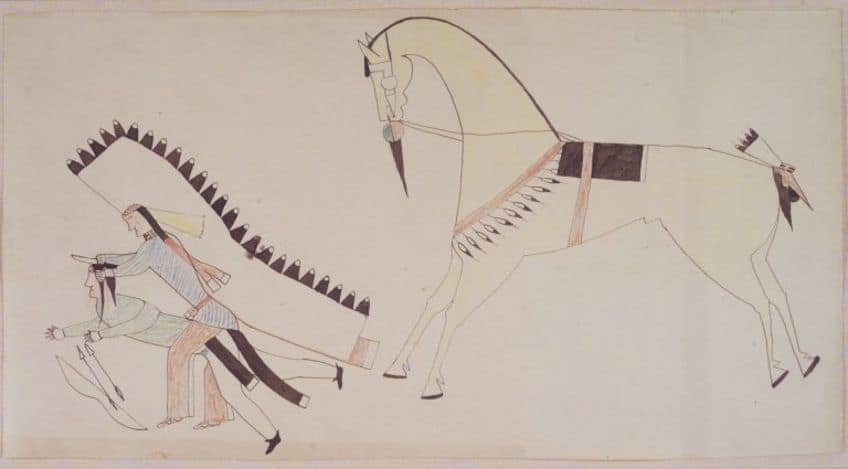
Untitled (c. 1960 – 1980) by George Ahgupuk
| Artist Name | George Ahgupuk (1911 – 2011) |
| Date | c. 1960 – 1980 |
| Medium | Ink and wash on walrus hide |
| Dimensions (cm) | 44.45 x 87.63 |
| Where It Is Housed | Denver Art Museum, Colorado, United States |
Untitled is a drawing by Inupiaq artist George Ahghupuk showing a vast landscape executed on walrus hide. Ahghupuk creatively honed his drawing skills using the ends of burnt matches during his time in a hospital and later, he leveraged his artistic talents to provide for his family. Ahghupuk’s artistic style showcases scenes from his everyday life, including dramatic vistas and activities such as ice fishing and sled dog training, which can be seen in the drawing.
Through these interesting visuals, Ahghupuk highlights not only the passage of time but also the cycle of life through the Inupiaq culture, which was built on the people’s relationship with the natural environment.
Owl and Bears (1976) by Kenojuak Ashevak
| Artist Name | Kenojuak Ashevak (1927 – 2013) |
| Date | 1976 |
| Medium | Ink on paper |
| Dimensions (cm) | 35.56 x 35.56 |
| Where It Is Housed | Denver Art Museum, Colorado, United States |
Owls and Bears reflect the graphic arts of the Inuit culture, created by Kenojuak Ashevak, who transferred images from her imagination onto paper and created some of the best-known Native American drawings of the 20th century. Birds are iconic features of Ashevak’s artwork and can be seen in many of her prints and drawings.
Native American Weaving
One of the best examples of Native American weaving comes from the Navajo culture. The Navajo culture was a nomadic group that settled in the southwest of the United States between the 10th and 11th centuries. The Navajo people were well-established by the 16th century and cultivated their passion for weaving through many colorful and vibrant baskets, vessels, blankets, rugs, and other textile objects.
Below, we will take a look at a few examples of woven baskets and vessels that capture the essence of the various intriguing indigenous cultures of ancient America.
Navajo Child’s Blanket (c. 1850) by Unknown Artist
| Artist Name | Unknown |
| Date | c. 1850 |
| Medium | Wool |
| Dimensions (cm) | 134.6 x 80.6 |
| Where It Is Housed | Denver Art Museum, Colorado, United States |
This bright orange Navajo woven blanket showcases striking and bold geometric designs. The cross is a popular motif that appears frequently in Navajo artwork, including mountain images that represent the Navajo homelands. Navajo blankets are also called serapes and were highly sought-after items for trade. One of the oldest Navajo woven artworks from the documented history of Native American art includes a rug called the Massacre Cave Blanket, which dates to around 1804.

Wounaan Basket Jar (1999 – 2000) by Herta Peña
| Artist Name | Herta Peña (n.d.) |
| Date | 1999 – 2000 |
| Medium | Woven Toquilla palm or Panama hat plant fiber, black palm or Chunga palm fiber, and dyes |
| Dimensions (cm) | 14.3 x 17.7 |
| Where It Is Housed | National Museum of the American Indian, Washington D.C., United States |
This Wounaan Basket Jar is an excellent demonstration of the vibrant woven baskets of the Noanama culture or Wounaan culture. The Wounaan culture is one of the major indigenous groups of Panama that produces some of the most beautiful woven artworks. These woven artworks reflect the indigenous fauna and flora of the indigenous regions and also feature geometric designs inspired by pre-Columbian rock art, textile artworks, and designs.
The art of weaving in American Indian culture is also very prominent in southwestern indigenous cultures, who believe in the narrative of the Spider Woman who taught people how to spin, thread, and weave cloth. An association was made between the act of weaving and the spider, which carries the ability to weave webs was passed down to humans. The Hopis culture also includes a narrative of a Spider Grandmother who was so dedicated to weaving her webs and was believed to “weave the world itself”.
The act of weaving thus represents an act of creation.

The Navajo tradition of diyogí or weaving is described as a legend whereby people were taught to weave by two holy figures known as the Spider Man and the Spider Woman. The narrative follows the tale of Spider Man who created a loom of sunshine, rain, and lightning, while Spider Woman taught the Navajo people how to weave the sunshine, rain, and lightning by employing a vertical loom. Some of the most common motives and symbols are found in Navajo weaving.
Artworks include crosses to resemble the spider woman, diamonds, images of mountains, triangle shapes, zigzags for lightning, and other designs alluding to Yei spirits, the Navajo homeland, and spirit lines for the release of spiritual energy from rugs.
Other notable Native American artists whose works explore the unique artistic styles of different regional cultures and societal issues include creatives such as Jaune Quick-to-See Smith, Brad Kahlhamer, Wendy Red Star, Cara Romero, and Nicholas Galanin.
American Indian art is a rich area of study where one can find many interesting remnants of Native America. The influence of indigenous cultural practices and belief systems is apparent across art forms such as weaving, painting, design, and sculpture in Native American art. It is also vital to ensure that these histories remain seen and heard for their unique value in global art history and the relationships that people developed with their natural environment. We hope that this article was just as enlightening for you as it was for us!
Frequently Asked Questions
What Is Native American Art?
Native American art refers to any artwork produced by the indigenous societies and cultures who occupied Northern America both prior to the arrival of Christopher Columbus, and after Northern parts of America became established as the United States. Native American art spans numerous indigenous cultures and groups who were relocated to different reservations after European settlers arrived in America.
What Art Forms Were Practiced by Native American People?
Many art forms emerged from the different cultural groups of Native American indigenous societies. These art forms included carving, sculpture, painting, drawing, printmaking, pottery, textile art, jewelry, and weaving, each of which styles evolved and influenced one another through connections with other indigenous cultures, including colonial, and post-colonial America.
Which Museum Houses the Largest Collection of American Indian Art?
The museum that houses the largest collection of American Indian art is the National Museum of the American Indian, which is located in Washington, D.C and contains over 825,000 items and spans more than 12,000 years of Native American history.
Jordan Anthony is a Cape Town-based film photographer, curator, and arts writer. She holds a Bachelor of Art in Fine Arts from the University of the Witwatersrand, Johannesburg, where she explored themes like healing, identity, dreams, and intuitive creation in her Contemporary art practice. Jordan has collaborated with various local art institutions, including the KZNSA Gallery in Durban, the Turbine Art Fair, and the Wits Art Museum. Her photography focuses on abstract color manipulations, portraiture, candid shots, and urban landscapes. She’s intrigued by philosophy, memory, and esotericism, drawing inspiration from Surrealism, Fluxus, and ancient civilizations, as well as childhood influences and found objects. Jordan is working for artfilemagazine since 2022 and writes blog posts about art history and photography.
Learn more about Jordan Anthony and about us.
Cite this Article
Jordan, Anthony, “Native American Art – The History of Native American Artworks.” artfilemagazine – Your Online Art Source. March 27, 2023. URL: https://artfilemagazine.com/native-american-art/
Anthony, J. (2023, 27 March). Native American Art – The History of Native American Artworks. artfilemagazine – Your Online Art Source. https://artfilemagazine.com/native-american-art/
Anthony, Jordan. “Native American Art – The History of Native American Artworks.” artfilemagazine – Your Online Art Source, March 27, 2023. https://artfilemagazine.com/native-american-art/.


